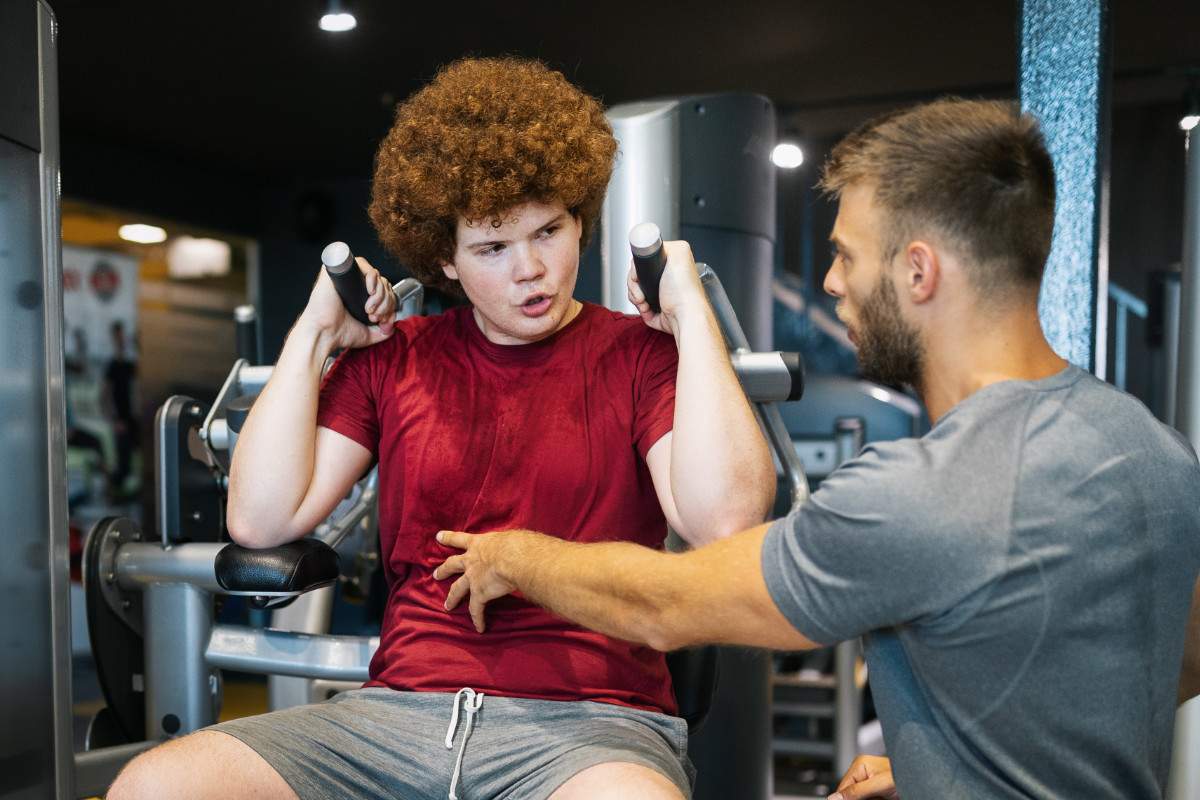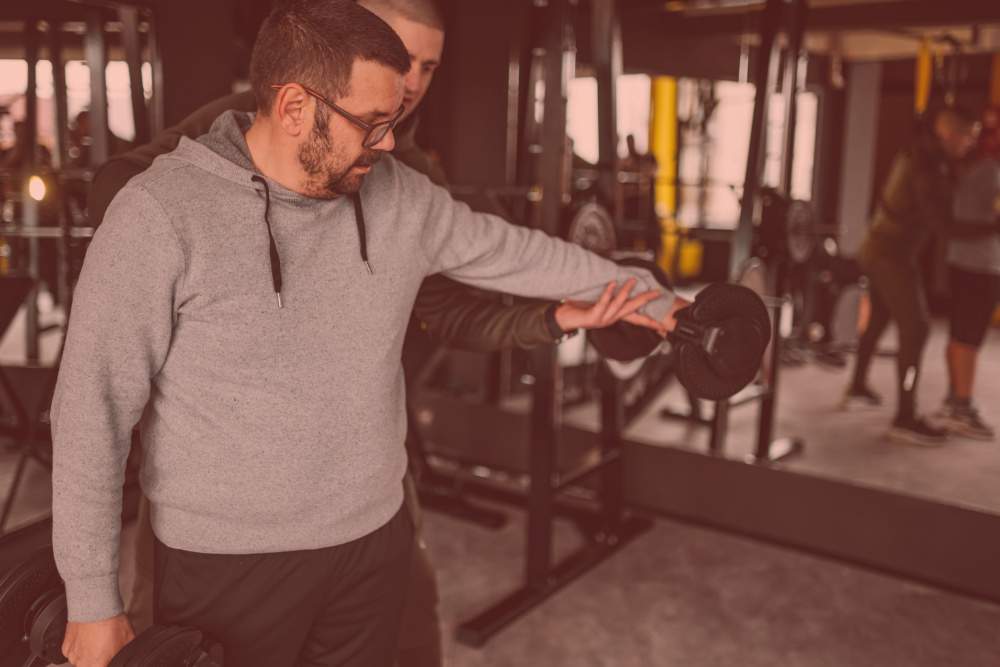Saving Lives: The Next Step in Your PT Career
You became a personal trainer to help people. But what if you could do more than help them lose weight or build muscle?
What if you could literally save lives?
The fitness industry is evolving. Personal trainers aren’t just exercise coaches anymore. You’re becoming healthcare providers. Lifestyle medicine practitioners. Life savers.
Here’s how to take your PT career to the next level.
The Healthcare Revolution in Fitness
Old Model:
Personal trainers helped people look better. Focused on aesthetics and performance.
New Model:
Personal trainers prevent disease. Manage chronic conditions. Extend lifespans.
The research is overwhelming. Exercise prevents and treats:
- Heart disease
- Type 2 diabetes
- Depression and anxiety
- Osteoporosis
- Cancer
- Dementia
You’re not just a trainer anymore. You’re a healthcare professional.
Why This Matters for Your Career
Higher Income Potential:
Medical fitness pays more than general fitness. Specialized skills command premium rates.
Job Security:
Healthcare is recession-proof. People always need medical support.
Professional Respect:
Working with medical professionals elevates your status and credibility.
Personal Fulfillment:
Helping someone manage diabetes feels different than helping them fit into jeans.
Our personal trainers Melbourne who specialize in medical fitness earn 40% more than general trainers.
Specializations That Save Lives
Cardiac Rehabilitation
What It Is:
Exercise programs for people recovering from heart attacks, surgery, or managing heart disease.
Skills Needed:
- Understanding of cardiac physiology
- Ability to monitor heart rate and blood pressure
- Knowledge of medications and their effects
- Emergency response training
Income Potential:
$80-120 per session. Often covered by health insurance.
Diabetes Management
What It Is:
Exercise prescription for Type 1 and Type 2 diabetes management.
Skills Needed:
- Blood glucose monitoring
- Understanding insulin and medication timing
- Nutrition knowledge
- Hypoglycemia recognition and treatment
Career Path:
Work with endocrinologists, diabetes educators, and medical centers.
Mental Health Fitness
What It Is:
Exercise programs specifically designed to treat depression, anxiety, and other mental health conditions.
Skills Needed:
- Basic psychology understanding
- Trauma-informed training approaches
- Crisis intervention basics
- Collaboration with mental health professionals
Growing Demand:
Mental health awareness is increasing. Exercise prescriptions are becoming standard treatment.
Our female personal trainers often specialize in mental health fitness, particularly for postpartum depression and anxiety.
Cancer Exercise Oncology
What It Is:
Exercise programs for people undergoing cancer treatment or in recovery.
Skills Needed:
- Understanding treatment side effects
- Fatigue management strategies
- Immune system considerations
- Gentle progression protocols
Emotional Rewards:
Helping someone through cancer treatment is incredibly meaningful work.
Neurological Rehabilitation
What It Is:
Exercise for people with Parkinson’s, multiple sclerosis, stroke recovery, and other neurological conditions.
Skills Needed:
- Movement disorder understanding
- Balance and fall prevention
- Adaptive equipment knowledge
- Patience and empathy
Our NDIS personal trainers work extensively in neurological rehabilitation.
How to Transition to Medical Fitness
Step 1: Get Educated
Formal Qualifications:
- Medical Exercise Specialist certification
- Chronic Disease Exercise Specialist
- Mental Health First Aid
- CPR and AED certification
Continuing Education:
- Attend medical conferences
- Read research journals
- Take anatomy and physiology courses
- Shadow healthcare professionals
Step 2: Build Medical Relationships
Network With:
- Physiotherapists
- Doctors
- Nurses
- Dietitians
- Psychologists
How to Connect:
- Attend medical seminars
- Volunteer at health events
- Offer free educational sessions
- Join professional associations
Step 3: Develop Your Niche
Choose Your Focus:
Don’t try to do everything. Pick one or two specializations and become an expert.
Build Expertise:
- Study specific conditions deeply
- Understand medications and treatments
- Learn to read medical reports
- Develop condition-specific programs
Step 4: Create Medical Partnerships
Referral Relationships:
Build trust with healthcare providers who can refer patients to you.
Collaborative Care:
Work as part of medical teams, not in isolation.
Documentation:
Learn to write professional reports that doctors value.
The Business Side of Medical Fitness
Pricing Medical Services
Higher Rates Justified:
Medical fitness requires more education, carries more responsibility, and provides greater value.
Insurance Billing:
Some services may be covered by health insurance or worker’s compensation.
Package Programs:
Offer comprehensive programs rather than single sessions.
Marketing to Medical Professionals
Professional Materials:
Create brochures, business cards, and websites that look medical, not just fitness-focused.
Case Studies:
Document success stories with measurable health improvements.
Educational Content:
Provide valuable information to healthcare providers about exercise benefits.
Working in Medical Settings
Hospital Fitness Centers:
Many hospitals now have fitness facilities staffed by medical exercise specialists.
Rehabilitation Clinics:
Work alongside physiotherapists and occupational therapists.
Medical Offices:
Some doctors employ exercise specialists in their practices.
Our gym personal trainers often transition to medical fitness centers for career advancement.
Technology in Medical Fitness
Monitoring Devices:
Heart rate monitors, blood pressure cuffs, glucose meters become standard tools.
Telehealth Integration:
Remote monitoring and virtual sessions expand your reach.
Electronic Health Records:
Learn to document in medical formats and communicate with healthcare systems.
Legal and Ethical Considerations
Scope of Practice:
Understand what you can and cannot do legally. Don’t diagnose or prescribe medications.
Insurance Requirements:
Professional liability insurance becomes more important and expensive.
Confidentiality:
HIPAA compliance and medical privacy laws apply.
Emergency Protocols:
Know when to call for medical help and how to respond to emergencies.
Success Stories from Melbourne
Case Study 1: Cardiac Rehab Specialist
Former gym trainer now works with cardiologists. Helps heart attack survivors return to active lives. Earns double previous income.
Case Study 2: Diabetes Exercise Coach
Specializes in Type 2 diabetes reversal through exercise and lifestyle. Partners with endocrinology clinic. Waiting list of clients.
Case Study 3: Mental Health Fitness
Works with psychologists treating depression and anxiety. Exercise prescriptions complement therapy. High client retention and
referrals.
Challenges You’ll Face
Additional Education Required:
Medical fitness demands ongoing learning and certification maintenance.
Higher Responsibility:
Working with sick people carries more risk and stress than training healthy clients.
Slower Progress:
Medical clients may progress more slowly than healthy fitness clients.
Emotional Demands:
Dealing with serious health conditions can be emotionally challenging.
The Rewards Make It Worth It
Financial Benefits:
Higher hourly rates, insurance coverage, stable income.
Professional Growth:
Respected as healthcare professional, not just fitness instructor.
Personal Satisfaction:
Knowing you’re genuinely improving and saving lives.
Job Security:
Healthcare needs continue to grow as population ages.
Different Paths for Different Locations
South Melbourne Opportunities:
Close to major hospitals and medical centers. High demand for cardiac rehab.
St Kilda Focus:
Mental health fitness popular in this diverse, artistic community.
Williamstown Potential:
Aging population creates demand for fall prevention and mobility programs.
Essendon Market:
Family-focused area with demand for pediatric and family health programs.
Online Medical Fitness
Virtual Consultations:
Provide exercise guidance remotely for people who can’t travel.
Monitoring Technology:
Use apps and devices to track client progress between sessions.
Educational Programs:
Create online courses for specific medical conditions.
Our online personal training platform includes medical fitness specializations.
Building Your Medical Fitness Brand
Professional Image:
Dress professionally. Use medical terminology appropriately. Maintain clinical environment.
Continuing Education:
Stay current with research. Attend medical conferences. Maintain certifications.
Networking:
Build relationships with healthcare providers. Join medical fitness organizations.
Documentation:
Keep detailed records. Measure and track health improvements.
The Future of Medical Fitness
Growing Demand:
Aging population, chronic disease epidemic, healthcare cost concerns drive demand.
Technology Integration:
Wearables, telehealth, AI will enhance medical fitness delivery.
Insurance Coverage:
More health plans covering exercise therapy and prevention programs.
Professional Recognition:
Exercise professionals gaining recognition as essential healthcare providers.
Combat Sports and Medical Fitness
Even boxing personal trainers can specialize in medical applications:
- Parkinson’s disease boxing programs
- PTSD treatment through combat sports
- Traumatic brain injury rehabilitation
Getting Started Today
Immediate Steps:
- Research medical fitness certifications
- Identify your area of interest
- Start networking with healthcare professionals
- Begin additional education
- Volunteer with medical organizations
Long-Term Planning:
- Develop 2-3 year education plan
- Build referral network
- Create business plan for medical fitness services
- Consider partnership opportunities
The Bottom Line on Medical Fitness Careers
The fitness industry is evolving toward healthcare. Personal trainers who adapt will thrive. Those who don’t will be left behind.
Medical fitness isn’t just about career advancement. It’s about making a real difference in people’s lives.
You have the opportunity to literally save lives through exercise. To help people manage chronic diseases. To prevent heart attacks and strokes. To treat depression and anxiety.
This is the future of personal training. The question is: will you be part of it?
Ready to take your PT career to the next level and start saving lives?
Call us: 0414 163 493
Let’s discuss how you can transition into medical fitness and build a career that’s both financially rewarding and personally fulfilling.
Our personal trainers who’ve made this transition can share their experiences and guide your journey into life-saving fitness careers.


